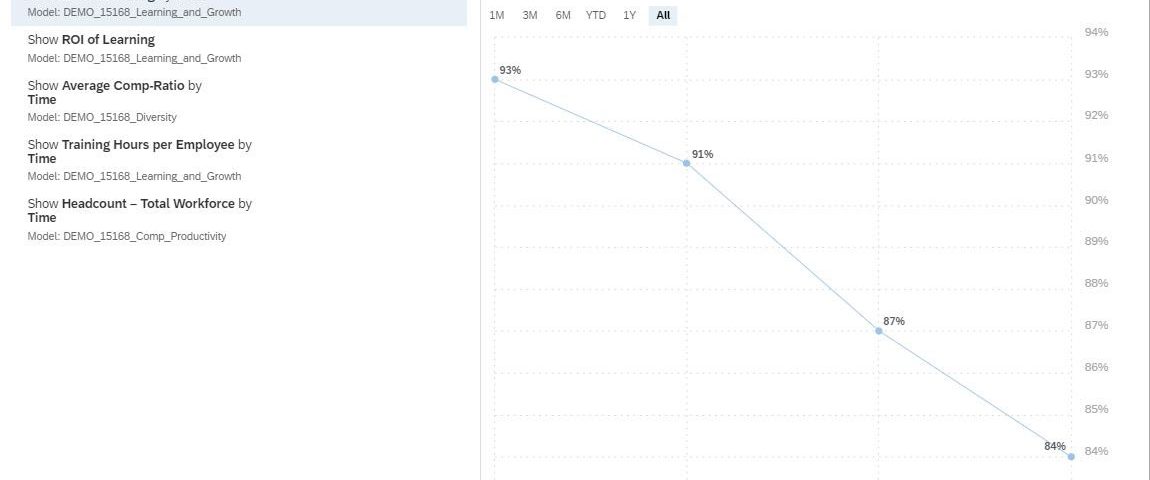As the digital economy continues to evolve, it is becoming imperative for organizations to understand how to leverage intelligent technologies—Big Data, artificial intelligence (AI), and machine learning—to bridge the gap between data-driven insights and innovation.
The traditional method of doing analytics with spreadsheets was hard to scale. But now, these smart capabilities enable people beyond human resources (HR) and business intelligence (BI) teams to think creatively and innovatively.
With SAP Analytics Cloud, smart assist capabilities can help bring your organization’s purpose to life and meaning to your employees’ work.
Ask Questions, Get Answers
Led by Google, keyword search has become the most popular gateway to the internet and to information. The likes of Siri, Alexa, and Google Assistant made it into the conversation. SAP Analytics Cloud follows this lead.
By asking a question about your business or people, you can receive instant insight through the search to insight feature, which uses auto-complete to match words or phrases in your questions. It helps you perform analytical research to solve difficult, expensive, and time-consuming issues.
To illustrate this feature, let’s look at how you can create a query to get insight into the return on investment (ROI) of learning. In figure 1, you can see that ROI of learning has been decreasing year to year.

Asking follow-up questions can refine the analysis, examine the success of specific programs, and focus on key workforce segments that will help target actions to correct a downward trend. The simplicity and ease of this feature allows a broader audience within your company to use the power of analytics.
Machine Learning Can Reveal Employee Behavior
The smart discovery feature within SAP Analytics Cloud uses machine learning to explore data and predictive analytics to uncover valuable insights. This feature allows you to identify key drivers influencing specific measures of employee behavior. Based on this, you can make informed decisions on what actions need to be taken and forecast future outcomes.
For example, smart discovery offers a deeper look at flight risk—what influences it, what characterizes it, and which employees are flight risks and why. In figure 2, the key influencers of flight risk are job function, successor readiness, and salary.

The detailed table lists specific employees predicted to leave, possible reasons why they may leave, and their risk scores. The data can be broken down further to evaluate flight risk by gender, managerial position, and organizational unit. Based on this information, targeted retention strategies can be put in place.
Why Should HR Leaders Care?
The future of work is changing the fundamental principles of how companies operate and how people get work done. Therefore, it will become critical for HR to innovate, adapt, and respond to achieve strategic business objectives. By using SAP SuccessFactors People Analytics, HR can democratize analytics with the search to insight capability and drive innovation through smart insight and smart discovery features.
We at SAP SuccessFactors recognize this and believe the Human Revolution is how organizations can drive action, be competitive, and ultimately become an innovation-driven business with people at the center of their vision.
Vrinda Raniga is a product management intern for Analytics at SAP SuccessFactors.







